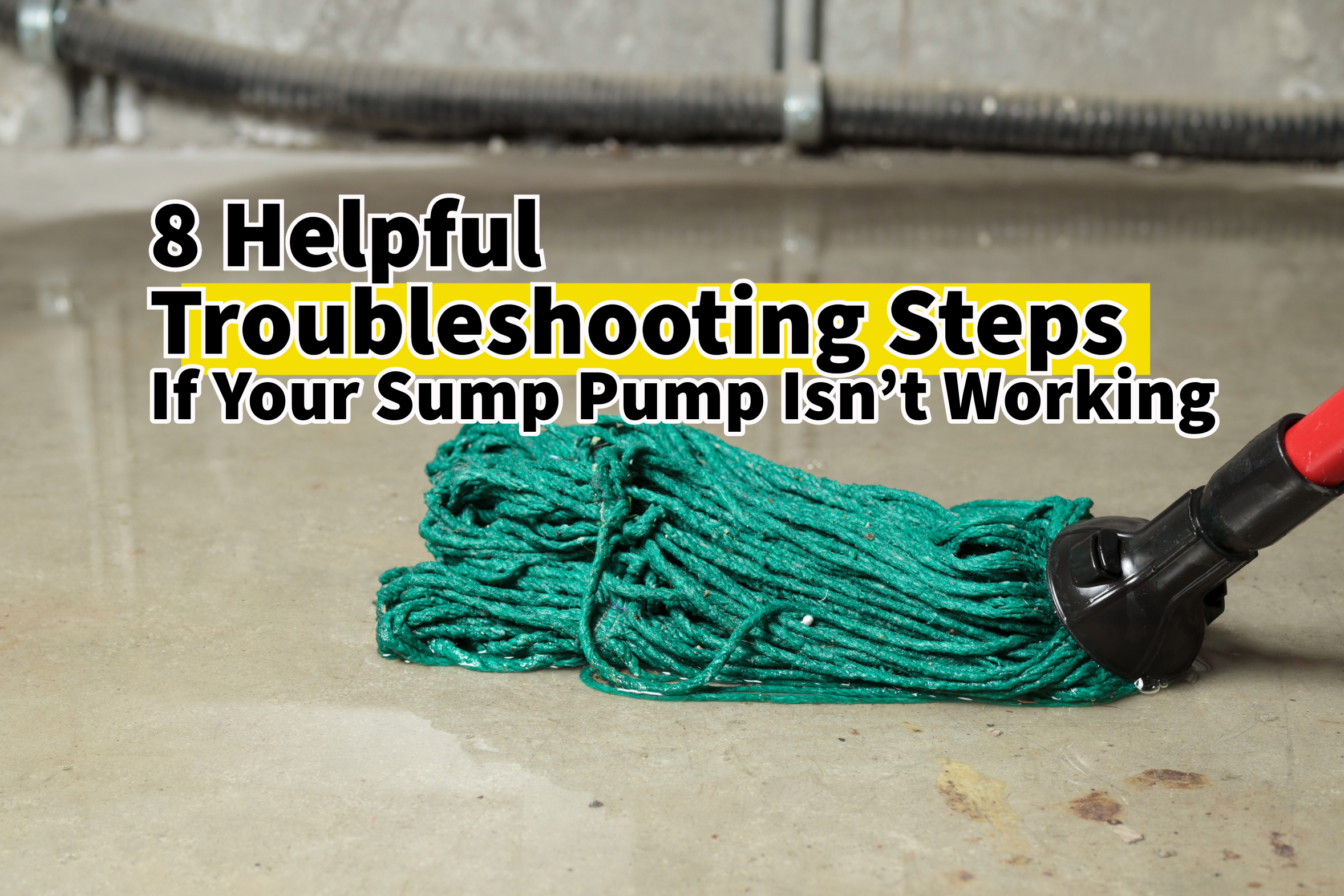Has your sump pump stopped working? With the recent weather we’ve been having, it’s not uncommon for folks in our neck of the woods to deal with winter sump pump problems. Especially with the snow melt and rain working overtime during the winter season, sump pump issues are, well, in full swing. And when your sump pump stops working, trust us, it’s not something you want to put off getting fixed.
Sump pumps are designed to pump water out and away from your home’s foundation. But if your sump pump suddenly stops working, it can quickly lead to a flooded basement and a whole bunch of other problems. The good news is our team at Gahanna Plumbing & Drain is here to help! We have pieced together eight things you can troubleshoot to help pinpoint the source of your sump pump problems. And why wait until something goes wrong? Even if you’re not experiencing any malfunctioning with your sump pump, take a moment today to familiarize yourself with the top ways to troubleshoot your sump pump.
Give These Steps a Try to Pinpoint the Issue:
- Check on the Power Supply: Power outages are one of the main culprits when it comes to a malfunctioning sump pump. Whether it’s caused by a severe storm or a tripped circuit breaker, if your sump pump has stopped working, the first thing you should do is check if it’s plugged in and has power. If not, you can also test the outlet with another device to see if that’s the issue. You can even try the good old trick of unplugging the pump and plugging it back in. Just remember, if the last trick works, it might only be a temporary fix.
- Test Out the Pump Motor: Make sure to listen to any unusual noises coming from the pump motor. Should you find that the motor isn’t running, go ahead and check the circuit breaker. It may be that it simply needs to be reset.
- Examine the Pump Basin: Now, let’s see what’s happening on the inside of the pump. Take a look at the sump pump basin for any debris, dirt, or even ice buildup. If you come across any, make sure to remove it carefully to avoid any blockage of the pump’s impeller.
- Inspect the Float Switch: Next, let’s move on to checking the float switch. Take a moment to look for any debris that needs to be cleared out, and make sure the float switch is moving freely. If the float is stuck or frozen, it won’t be able to activate the pump as it should. So, keep an eye out for that!
- Test the Check (or Overflow) Valve: Make sure to verify that the check valve is installed correctly. You’ll want to verify that there’s no debris blocking the valve. Sometimes, the pipe above the check valve can get clogged, too, which can prevent the check valve from working properly. If the check valve is doing its job as intended, it will stop water from flowing back into the sump pit.
- Take a Look at the Discharge Pipe: If your basement is flooded and the water isn’t being discharged away from your home, it’s probably because the discharge pipe is clogged. So, let’s turn our attention to finding and checking the discharge pipe for any obstructions.
- Clear the Weeping Hole: Another thing you’ll want to check is the weeping hole. Your sump pumps should have a small hole on the discharge pipe that’s designed to release air and keep everything running properly. When this weeping hole gets blocked, the pump won’t function properly. If there’s a clog in the weeping hole, you’ll need to clear it out.
- Think About the Size of Your Pump: If your sump pump is not properly sized for your space, it won’t be able to handle the high volumes of water coming its way. If this keeps happening to you, it might be a good idea to think about upgrading to prevent it from happening over and over again.
You’ve got this! With a little determination and some focused DIY troubleshooting, you should be able to figure out what’s going on with your sump pump. And remember, safety first! So, take your time, go slow, and be careful as you assess the situation and work through each troubleshooting step. You got this!
Consult a Professional Plumber If:

Are you still scratching your head, trying to figure out what’s going on? Don’t worry; that’s what we’re here for! If you’ve followed these troubleshooting steps and the issue still persists, it might be time to reach out to us. Our team of professionals can diagnose the problem with your sump pump and get it up and running again. It’s important to have a licensed plumber inspect your sump pump to uncover any underlying issues. So, please don’t hesitate to contact us!
Discover These Valuable Sump Pump Tips and Stay Ahead of the Game:
Before we wrap this up, let us share some tips to help you keep your sump pump running smoothly in the future:
To avoid any mishaps, it’s a great idea to make it a habit to quickly check on it every now and then. You just want to make sure that everything is running as it should be, with no strange sounds coming from the unit. Should you hear anything that sounds out of the normal, you should have it looked at by a professional right away.
In addition, maintaining a clutter-free zone around the sump pump is crucial. You should clear away any random objects and loose debris that could spell trouble for your pump. The accumulation of loose debris can lead to clogs and hinder the functionality of your sump pump. So, it’s vital to ensure that the sump pump pit lid is securely in place and tightly sealed, keeping unwanted particles at bay. By securing the lid, you can prevent debris from sneaking into the pit and causing interference.
Your plumbing system is like the heart of your home. So, it’s super important to rely on someone you can trust! Well, at Gahanna Plumbing & Drain, our customers are our number one priority. We care about your safety, comfort, and your plumbing system!
If you ever need help with your plumbing, Gahanna Plumbing & Drain is here for you. We’ve got your back for all of your plumbing needs. Call us today at (614) 245-2256, or schedule an appointment online now by clicking here!




